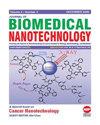Therapeutic Effects of Lycopene on Lipopolysaccharide-Induced Acute Lung Injury: Regulation of the PINK1/Parkin Signaling Pathway and Mitochondrial Autophagy
IF 2.9
4区 医学
Q1 Medicine
引用次数: 0
Abstract
This study investigates the mechanism underlying the therapeutic effects of lycopene (Lyc) on lipopolysaccharide (LPS)-induced acute lung injury (ALI). ALI cell models were established using A549 cells treated with LPS. Cell viability was assessed using cell counting kit-8. ALI cells were treated with Lyc, mitochondrial autophagy inhibitor cyclosporine A (CsA), PTEN-induced kinase 1 (PINK1) activator Valinomycin, and reactive oxygen species (ROS) inhibitor N-acetylcysteine (NAC). Apoptosis was evaluated by flow cytometry and JC-1 probe staining. ROS and adenosine triphosphate levels were determined using dichloro-dihydro-fluorescein diacetate staining. Western blot assessed the expression levels of light chain 3 (LC3), Lysosomal-associated membrane protein 1, PINK1, and Parkin. An LPS-induced ALI rat model was treated with different concentrations of Lyc. Lung injury was assessed by hematoxylin and eosin staining. Levels of tumor necrosis factor-α, interleukin-6, and lactate dehydrogenase were measured by ELISA combined with magnetic nanoparticles. In this study, different concentrations of Lyc treatment enhanced cell survival. Additionally, Lyc treatment reduced the cell apoptosis rate, decreased lactate dehydrogenase (LDH) leakage and ROS level in ALI cells, and inhibited the expression of LC3, Beclin-1, PINK1, and Parkin. Consistent effects were seen in Lyc, CsA, Valinomycin, and NAC groups, suggesting similar impacts. In animal experiments, Lyc treatment significantly mitigated edema, inflammation, and autophagy in lung tissues. Furthermore, Lyc exhibited a protective effect on ALI cells by regulating PINK1/Parkin pathway and inhibiting mitochondrial autophagy. Overall, Lyc regulates mitochondrial autophagy in LPS-induced ALI with practical significance for studying its pharmacological mechanism and theoretical implications for understanding autophagy in ALI.番茄红素对脂多糖诱导的急性肺损伤的治疗作用:PINK1/Parkin信号通路和线粒体自噬的调控
本研究探讨番茄红素(Lyc)对脂多糖(LPS)诱导的急性肺损伤(ALI)的治疗作用机制。采用LPS处理的A549细胞建立ALI细胞模型。采用细胞计数试剂盒-8测定细胞活力。ALI细胞分别用Lyc、线粒体自噬抑制剂环孢素A (CsA)、pten诱导的激酶1 (PINK1)激活剂Valinomycin和活性氧(ROS)抑制剂n -乙酰半胱氨酸(NAC)处理。流式细胞术和JC-1探针染色检测细胞凋亡。采用二氯-二氢-双乙酸荧光素染色法测定ROS和三磷酸腺苷水平。Western blot检测轻链3 (LC3)、溶酶体相关膜蛋白1、PINK1和Parkin的表达水平。用不同浓度的Lyc处理lps诱导的ALI大鼠模型。苏木精和伊红染色评估肺损伤。ELISA联合磁性纳米颗粒检测肿瘤坏死因子-α、白细胞介素-6、乳酸脱氢酶水平。在本研究中,不同浓度的Lyc处理可提高细胞存活率。此外,Lyc处理降低了ALI细胞的细胞凋亡率,降低了乳酸脱氢酶(LDH)渗漏和ROS水平,抑制了LC3、Beclin-1、PINK1和Parkin的表达。在Lyc, CsA, Valinomycin和NAC组中观察到一致的效果,表明类似的影响。在动物实验中,Lyc治疗显著减轻了肺组织的水肿、炎症和自噬。此外,Lyc通过调节PINK1/Parkin通路,抑制线粒体自噬,对ALI细胞具有保护作用。综上所述,Lyc在lps诱导的ALI中调控线粒体自噬,对于研究其药理机制和理解ALI自噬的理论意义具有现实意义。
本文章由计算机程序翻译,如有差异,请以英文原文为准。
求助全文
约1分钟内获得全文
求助全文
来源期刊
CiteScore
4.30
自引率
17.20%
发文量
145
审稿时长
2.3 months
期刊介绍:
Information not localized

 求助内容:
求助内容: 应助结果提醒方式:
应助结果提醒方式:


